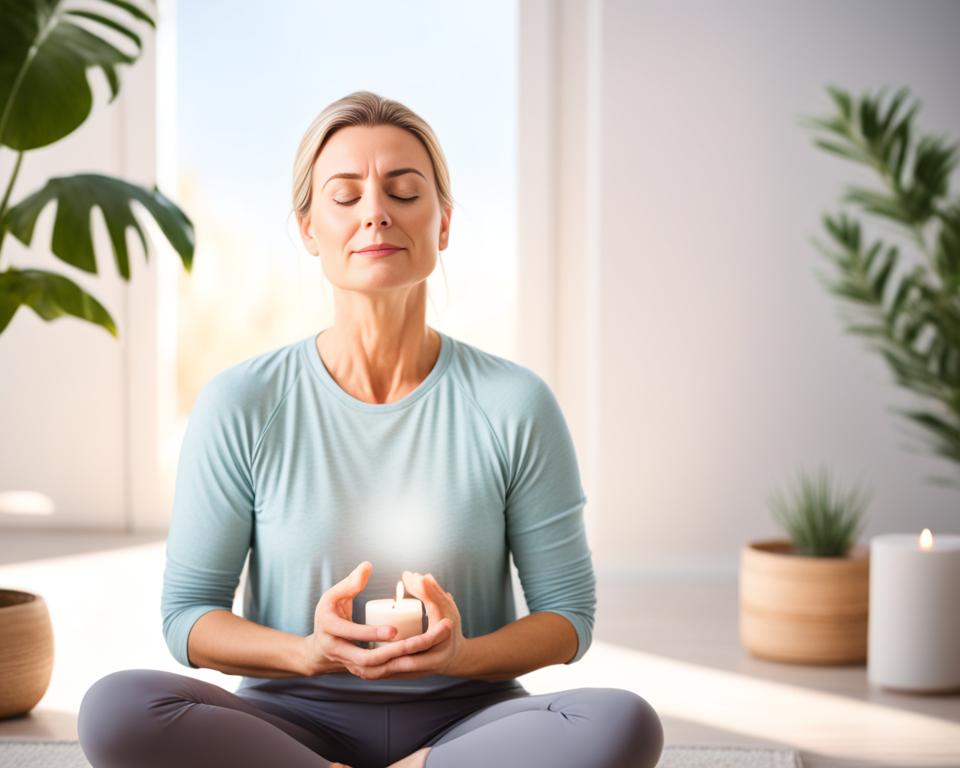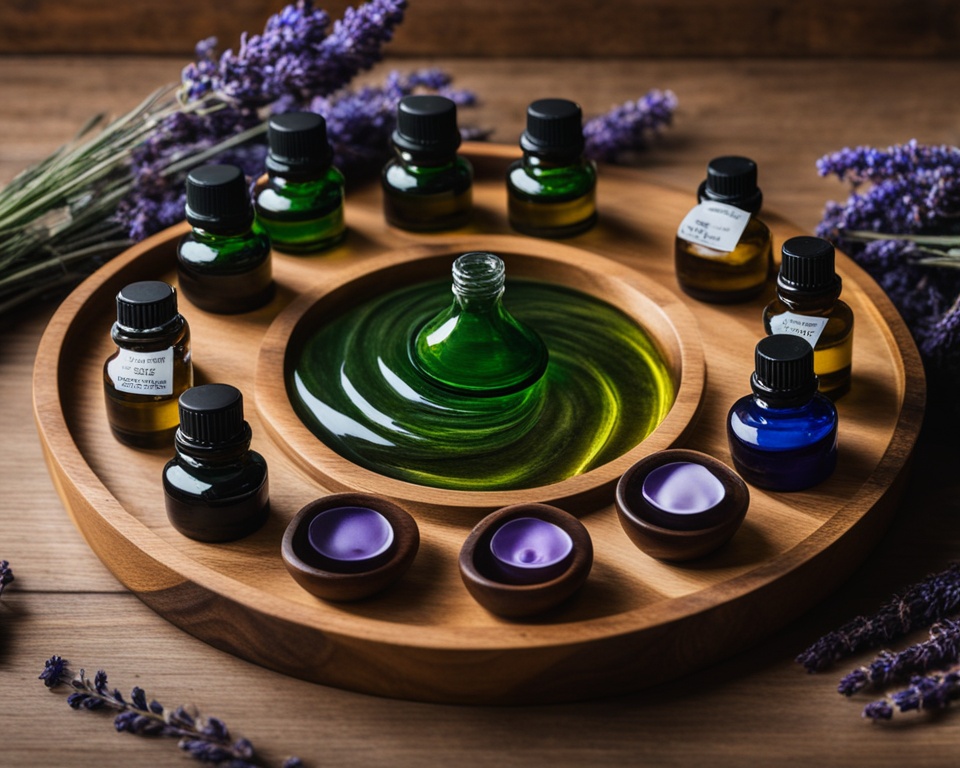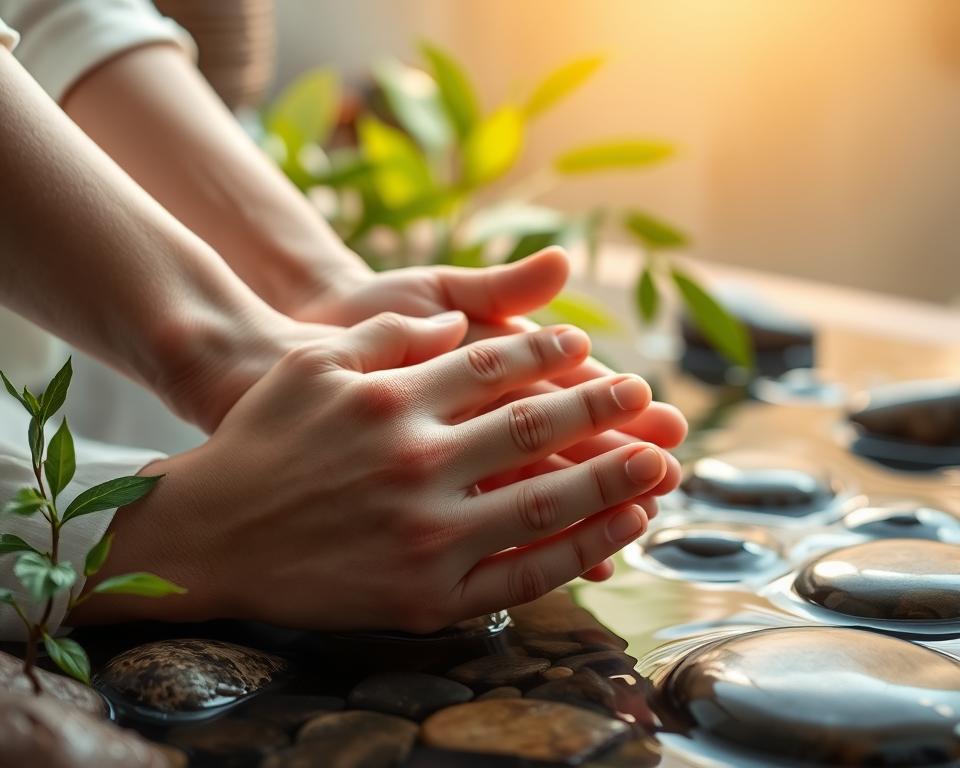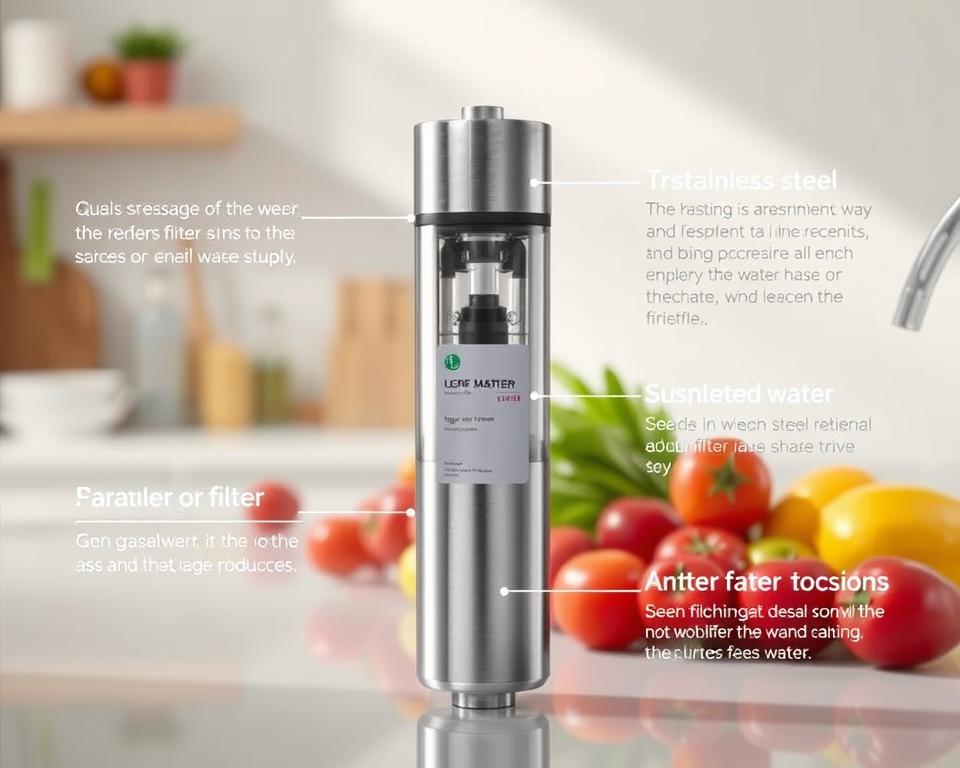
In today’s fast-paced world, stress has become a ubiquitous part of our daily lives. However, by incorporating a range of relaxation strategies into your routine, you can learn to effectively manage stress and promote overall well-being. This article will explore a variety of techniques, including mindfulness meditation, deep breathing exercises, progressive muscle relaxation, yoga for stress relief, guided imagery, journaling for stress management, aromatherapy for relaxation, nature therapy, and binaural beats for relaxation.
By exploring these diverse relaxation strategies, you’ll gain practical tools to better cope with the demands of everyday life and improve your mental and physical health. Each method will be explained in detail, with step-by-step guidance to help you get started and integrate these practices into your daily routine.
Read more interesting information at ::nanbacity
Introduction to Stress Management
Stress is a natural part of life, but when left unchecked, it can have a significant impact on both our physical and mental well-being. Effective stress management is crucial for maintaining a healthy and balanced lifestyle. In this section, we will explore the importance of understanding the impact of stress and the vital role that relaxation techniques play in mitigating its adverse effects.
Understanding the Impact of Stress
Stress can manifest in various ways, ranging from physical symptoms such as headaches, muscle tension, and digestive issues to emotional symptoms like anxiety, irritability, and difficulty concentrating. When stress levels remain elevated, it can lead to long-term health consequences, including an increased risk of cardiovascular disease, weakened immune system, and mental health challenges like depression and burnout.
The Importance of Relaxation Techniques
Incorporating relaxation techniques into your daily routine is crucial for managing stress and promoting overall well-being. By engaging in practices that help you unwind and recharge, you can alleviate the physical and mental strain caused by stress, leading to improved mood, reduced anxiety, better sleep, and enhanced overall quality of life.
Mindfulness Meditation
Mindfulness meditation is a powerful practice that can significantly alleviate stress and promote overall well-being. By cultivating a state of present-moment awareness, individuals can learn to observe their thoughts and emotions with a non-judgmental attitude, reducing the influence of negative thought patterns that often contribute to stress and anxiety.
Benefits of Mindfulness Meditation
Consistent mindfulness meditation has been shown to offer a multitude of benefits for stress management. Through this practice, individuals can develop greater self-awareness, emotional regulation, and the ability to respond to challenges with more clarity and equanimity. Mindfulness meditation has also been linked to reduced rumination, improved focus, and increased feelings of inner peace and contentment.
Guided Meditation for Beginners
If you’re new to mindfulness meditation, getting started with a guided practice can be incredibly helpful. Guided meditation provides step-by-step instructions and a supportive voice to lead you through the process, making it easier to stay focused and engaged. Many free guided meditation for beginners resources are available online, ranging from short, 5-10 minute sessions to longer, more in-depth experiences. Experiment with different guided meditations to find the one that resonates most with you and your needs.
Regardless of your experience level, incorporating mindfulness meditation into your daily routine can be a transformative step towards managing stress and cultivating a greater sense of inner peace. Start with just a few minutes a day and gradually build up your practice as you become more comfortable with the process. With patience and consistency, you’ll begin to reap the profound benefits of this powerful stress-relieving technique.
Deep Breathing Exercises
Deep breathing exercises are a simple yet powerful technique for managing stress and promoting relaxation. By consciously slowing down and deepening your breath, you can activate the body’s parasympathetic nervous system, which is responsible for the “rest and digest” response, counteracting the stress-induced “fight or flight” reaction.
The science behind deep breathing exercises lies in their ability to influence the autonomic nervous system and the body’s physiological response to stress. When you take slow, deep breaths, it triggers a series of physiological changes, including a decrease in heart rate, blood pressure, and muscle tension, as well as an increase in oxygen intake and feelings of calmness.
In this section, we will explore various deep breathing exercises and breathing techniques for stress relief, providing you with detailed instructions on how to incorporate them into your daily routine. From diaphragmatic breathing to alternate nostril breathing, these practices can be easily learned and seamlessly integrated into your life, helping you manage stress and find a greater sense of inner peace.
By dedicating just a few minutes a day to deep breathing exercises, you can experience a myriad of benefits, including reduced anxiety, improved focus, better sleep, and enhanced overall well-being. Embrace the power of your breath and unlock the profound relaxation and stress-relief that these breathing techniques for stress relief can provide.
Progressive Muscle Relaxation
One highly effective technique for managing stress and promoting relaxation is progressive muscle relaxation. This method involves systematically tensing and releasing different muscle groups throughout the body, helping to alleviate physical tension and mental stress.
Step-by-Step Guide to Progressive Muscle Relaxation
To practice progressive muscle relaxation, follow these simple steps:
- Find a comfortable, quiet place where you can focus without distractions.
- Begin by taking a few deep breaths, inhaling through your nose and exhaling through your mouth.
- Start with your feet and toes. Tense the muscles in your feet and toes, holding the tension for a few seconds, then release.
- Move up to your legs, tensing and releasing the muscles in your calves, thighs, and hips.
- Continue the process through your abdominal muscles, chest, back, shoulders, arms, and hands.
- Finally, focus on your face and neck, tensing and releasing the muscles in your forehead, eyes, jaw, and throat.
- Once you’ve completed the full-body sequence, take a few more deep breaths and allow your body to fully relax.
By systematically tensing and releasing each muscle group, you can effectively reduce physical tension and mental stress. Regular practice of progressive muscle relaxation can help you achieve a deep sense of calm and well-being.
To incorporate this technique into your daily routine, set aside 15-20 minutes each day to engage in progressive muscle relaxation. Over time, you’ll become more adept at the process, allowing you to better manage stress and find a greater sense of inner peace.
Yoga for Stress Relief
Yoga has long been recognized as a powerful tool for managing stress and promoting overall well-being. By incorporating yoga into your daily routine, you can unlock a range of benefits that can help alleviate the negative impacts of stress on your mental and physical health.
Gentle Yoga Poses for Beginners
If you’re new to yoga, it’s essential to start with gentle poses that can help you ease into the practice and build a strong foundation. Some of the most beginner-friendly yoga poses for stress relief include Child’s Pose, Downward-Facing Dog, and Legs-Up-the-Wall. These gentle postures can help you cultivate a sense of calm, release physical tension, and encourage deeper breathing.
Incorporating Yoga into Your Daily Routine
Integrating yoga into your daily routine can be a game-changer in managing stress. Whether it’s dedicating 10-20 minutes each morning to a yoga flow or incorporating simple yoga-inspired movements throughout your day, making it a consistent habit can have a profound impact. Consider setting aside a specific time or creating reminders to practice yoga, even if it’s just a few minutes at a time. Consistency is key when it comes to harnessing the stress-relieving benefits of this ancient practice.
By exploring gentle yoga poses and developing a routine that works for you, you can tap into the power of this mindful practice to find greater calm, focus, and resilience in the face of life’s stressors. Embrace the opportunity to nourish your body and mind through the transformative benefits of yoga for stress relief.
relaxation strategies for stress
Effective relaxation strategies for stress can be a powerful tool in your arsenal for managing the demands of daily life. From mindfulness meditation to deep breathing exercises, a diverse range of techniques can help you find the right balance and reduce the negative impact of stress management techniques. In this section, we’ll explore an array of relaxation strategies to help you create a personalized approach that works best for you.
One of the foundational relaxation strategies for stress is the practice of mindfulness meditation. By cultivating present moment awareness and a non-judgmental mindset, mindfulness can help calm the mind and alleviate the physical symptoms of stress. Engaging in guided meditations or simply focusing on your breath can be a transformative way to find inner peace and greater emotional regulation.
Deep breathing exercises are another highly effective stress management technique. By taking slow, deep breaths, you can activate the parasympathetic nervous system, which is responsible for the body’s rest and digest response. Techniques like diaphragmatic breathing and alternate nostril breathing can be easily integrated into your daily routine to promote relaxation and stress relief.
Progressive muscle relaxation is a structured approach that involves systematically tensing and releasing different muscle groups. This method can help you become more aware of physical tension and learn to let go of it, leading to a deep sense of calm and relaxation throughout the body. Regularly practicing progressive muscle relaxation can be a valuable addition to your relaxation strategies for stress.
Regardless of the specific relaxation strategies for stress you choose to explore, the key is to find what works best for you and make relaxation a consistent part of your lifestyle. By experimenting with different techniques and creating a personalized routine, you can develop a toolbox of strategies to draw upon whenever you need to manage stress and find a sense of inner peace.

Guided Imagery
Guided imagery is a powerful relaxation technique that harnesses the power of the imagination to create mental images and sensations that promote a state of calmness and well-being. By engaging in guided imagery, individuals can transport themselves to serene and tranquil environments, allowing the mind and body to de-stress and unwind.
Visualization Techniques for Relaxation
One of the key benefits of guided imagery is its ability to help individuals manage stress and anxiety. Through the practice of visualization, people can create personal mental retreats that transport them away from the demands of daily life. By visualizing calming scenes, such as a secluded beach, a lush forest, or a peaceful mountain landscape, the mind and body can be soothed and rejuvenated.
To enhance the effectiveness of guided imagery, individuals can incorporate additional sensory elements into their visualizations, such as the sound of gentle waves, the scent of fresh flowers, or the feeling of a cool breeze. By engaging multiple senses, the brain can more vividly experience the relaxation response, leading to a deeper sense of tranquility and stress relief.
Another powerful technique in guided imagery is the use of personalized imagery. By creating unique mental images that hold personal meaning and significance, individuals can cultivate a stronger emotional connection to the relaxation process. This can involve visualizing a beloved childhood memory, a spiritual or religious symbol, or a cherished place from one’s life.
Incorporating guided imagery into your daily routine can be a highly effective way to manage stress and promote overall well-being. Whether you choose to engage in a structured guided imagery session or simply take a few moments throughout the day to visualize a calming scene, this relaxation technique can help you find a sense of inner peace and rejuvenation.
Journaling for Stress Management
Journaling can be a powerful tool for managing stress and promoting overall mental health. By regularly expressing thoughts and emotions through the written word, individuals can gain valuable insights, process complex feelings, and find a sense of clarity amidst the demands of daily life.
Benefits of Journaling for Mental Health
The practice of journaling for mental health has been shown to offer a range of benefits, including:
- Improved emotional regulation and stress reduction by providing a safe outlet for processing feelings
- Enhanced self-awareness and personal growth through the act of reflecting on experiences and inner thoughts
- Reduced rumination and negative thought patterns by encouraging a more balanced perspective
- Increased overall well-being and a greater sense of control over one’s life
Tips for Effective Stress-Relieving Journaling
To engage in effective stress-relieving journaling, consider the following tips:
- Set aside a dedicated time each day or week to write, ensuring it becomes a consistent habit
- Experiment with different journaling techniques, such as free-writing, gratitude lists, or prompt-based reflections
- Focus on expressing your thoughts and feelings authentically, without censoring or judgment
- Incorporate mindfulness practices, such as deep breathing, to enhance the journaling experience
- Refer back to your journal entries periodically to track personal growth and identify patterns
By incorporating journaling for stress management into your daily routine, you can unlock the powerful benefits of this versatile and accessible relaxation technique. Whether you’re processing difficult emotions, seeking greater self-understanding, or simply striving for a more balanced and fulfilling life, the act of journaling can serve as a valuable tool in your stress management toolkit.
Aromatherapy for Relaxation
Aromatherapy, the use of essential oils, can be a wonderful way to promote relaxation and alleviate stress. The science behind essential oils and their ability to influence the mind and body is quite fascinating. Certain oils, when inhaled or applied to the skin, can elicit a calming response by interacting with the limbic system, the part of the brain responsible for processing emotions and memories.
Essential Oils for Stress Relief
When it comes to essential oils for stress relief, there are several scents that stand out for their soothing properties. Lavender, for instance, is renowned for its ability to reduce anxiety and promote a sense of tranquility. Bergamot, with its citrusy aroma, can help uplift the mood and ease tension. Ylang-ylang is another popular choice, as it has been shown to lower blood pressure and heart rate, inducing a state of deep relaxation.
In addition to these classic options, other essential oils like frankincense, chamomile, and clary sage are also highly effective in managing aromatherapy for relaxation. By incorporating these oils into your daily routine, you can create a sanctuary of calm amidst the stresses of everyday life.

Whether you choose to diffuse the oils, add them to a relaxing bath, or apply them in the form of a massage, the benefits of aromatherapy for relaxation can be profound. Experiment with different scents and methods to discover which ones resonate most with your senses and help you achieve a deeper state of tranquility.
Nature Therapy
Spending time in nature has been shown to have a profound impact on mental health and stress levels. This concept, known as nature therapy or ecotherapy, has gained increasing recognition for its ability to promote relaxation, reduce anxiety, and enhance overall well-being.
The Healing Power of Nature
Numerous studies have demonstrated the remarkable healing power of nature. Exposure to natural environments can have a calming effect on the mind, triggering physiological changes that alleviate the body’s stress response. By immersing ourselves in the sights, sounds, and smells of the great outdoors, we can experience a sense of grounding and connection that helps to alleviate the mental strain of daily life.
Outdoor Activities for Stress Reduction
Engaging in outdoor activities is a fantastic way to harness the stress-reducing benefits of nature therapy. From taking a leisurely hike and forest bathing to participating in outdoor yoga or gardening, there are countless ways to reconnect with the natural world and find respite from the demands of everyday life. These activities not only provide physical exercise, but also offer an opportunity to quiet the mind and find a sense of calm and rejuvenation.
Whether it’s a short walk in the park or a more immersive experience in a natural setting, incorporating nature therapy into your lifestyle can have a profound impact on your stress levels and overall well-being. By making time to explore and connect with the great outdoors, you can unlock the healing power of nature and discover a newfound sense of balance and tranquility.
Binaural Beats for Relaxation
In the ever-evolving world of relaxation techniques, binaural beats have emerged as a powerful tool for promoting a state of deep tranquility and stress relief. This unique auditory phenomenon has gained significant attention for its ability to influence brain activity and induce a calming, meditative state.
How Binaural Beats Work
Binaural beats are created by presenting two slightly different frequencies, one to each ear, which the brain then processes and interprets as a single, pulsing tone. This audio effect triggers a response in the brain, causing it to produce brainwaves that correspond to the difference between the two frequencies. By selecting specific frequency combinations, binaural beats can be used to guide the brain into different states of consciousness, including the deeply relaxed alpha and theta waves associated with meditation and stress reduction.
When the brain is exposed to these binaural beats, it begins to synchronize its own electrical activity to match the pulsing tones, a phenomenon known as entrainment. This process can lead to a state of heightened focus, improved mood, and reduced stress levels, making binaural beats a valuable addition to any binaural beats for relaxation routine.
To incorporate binaural beats for relaxation into your stress management practices, simply find a quiet, comfortable space, put on your headphones or earbuds, and let the soothing tones transport you to a deeper state of calm. Experts recommend experimenting with different binaural beat frequencies, often between 4-12 Hz, to discover the ones that resonate most effectively with your individual needs and preferences.
By harnessing the power of how binaural beats work, you can unlock a new level of relaxation and stress relief, empowering you to better manage the demands of everyday life and cultivate a greater sense of inner peace.
Combining Relaxation Techniques
When it comes to effectively managing stress, the power lies in combining a variety of relaxation techniques. Different individuals may respond better to certain methods over others, so it’s essential to experiment with a range of approaches and find the right mix that works best for you.
Creating a Personalized Relaxation Routine
To create a personalized relaxation routine, start by exploring the various techniques covered in this article, such as mindfulness meditation, deep breathing exercises, progressive muscle relaxation, and guided imagery. Assess which methods resonate with you the most and how they make you feel. Remember, there is no one-size-fits-all solution, so be open to trying different combinations until you discover the perfect balance.
Once you’ve identified the relaxation strategies that work best for you, aim to incorporate them seamlessly into your daily life. This could involve setting aside dedicated time for a comprehensive relaxation practice or integrating various techniques throughout your day, such as taking mindful breaks, practicing deep breathing during your commute, or incorporating gentle yoga poses while at your desk.
The key is to make relaxation a priority and make it a natural part of your routine. By combining multiple relaxation techniques, you can create a personalized approach that addresses your unique needs and effectively manages stress, leading to improved overall well-being.
Lifestyle Changes for Stress Management
Effectively managing stress requires a holistic approach that extends beyond specific relaxation techniques. By incorporating lifestyle changes that support overall well-being, you can create a more sustainable and comprehensive approach to stress management.
Healthy Habits for Overall Well-being
Establishing healthy habits can play a crucial role in reducing stress and promoting overall well-being. This includes the following recommendations:
- Maintain a balanced, nutrient-rich diet that nourishes your body and mind.
- Engage in regular exercise to release endorphins and improve physical and mental health.
- Prioritize adequate sleep by establishing a consistent sleep routine and practicing good sleep hygiene.
- Nurture your social connections by spending quality time with loved ones and engaging in meaningful relationships.
- Practice mindfulness and gratitude throughout your daily activities to cultivate a positive mindset.
By addressing stress-inducing factors in your daily life and adopting these healthy habits, you can create a more holistic and effective approach to stress management.
Conclusion
As we come to the end of our exploration of effective relaxation strategies for stress management, it’s important to emphasize the significance of incorporating these techniques into your daily routine. The conclusion of this article serves as a summary of the key relaxation methods we’ve covered, each offering unique benefits to help you find balance and reduce the negative impact of stress on your overall well-being.
From the mindfulness-based practices of meditation and deep breathing, to the physical and mental benefits of yoga, progressive muscle relaxation, and guided imagery, we’ve provided you with a comprehensive toolkit to tackle stress head-on. Additionally, we’ve explored the therapeutic power of nature, the calming effects of aromatherapy, and the intriguing realm of binaural beats as avenues for relaxation strategies.
Remember, the most effective approach is to experiment with different techniques and find the ones that resonate most with you. By making relaxation a priority and seamlessly integrating these methods into your daily life, you can empower yourself to take proactive steps towards a healthier, more balanced lifestyle. Ultimately, the summary of relaxation strategies presented in this article is a powerful resource to help you manage stress, boost your mental and physical well-being, and improve the quality of your life.






